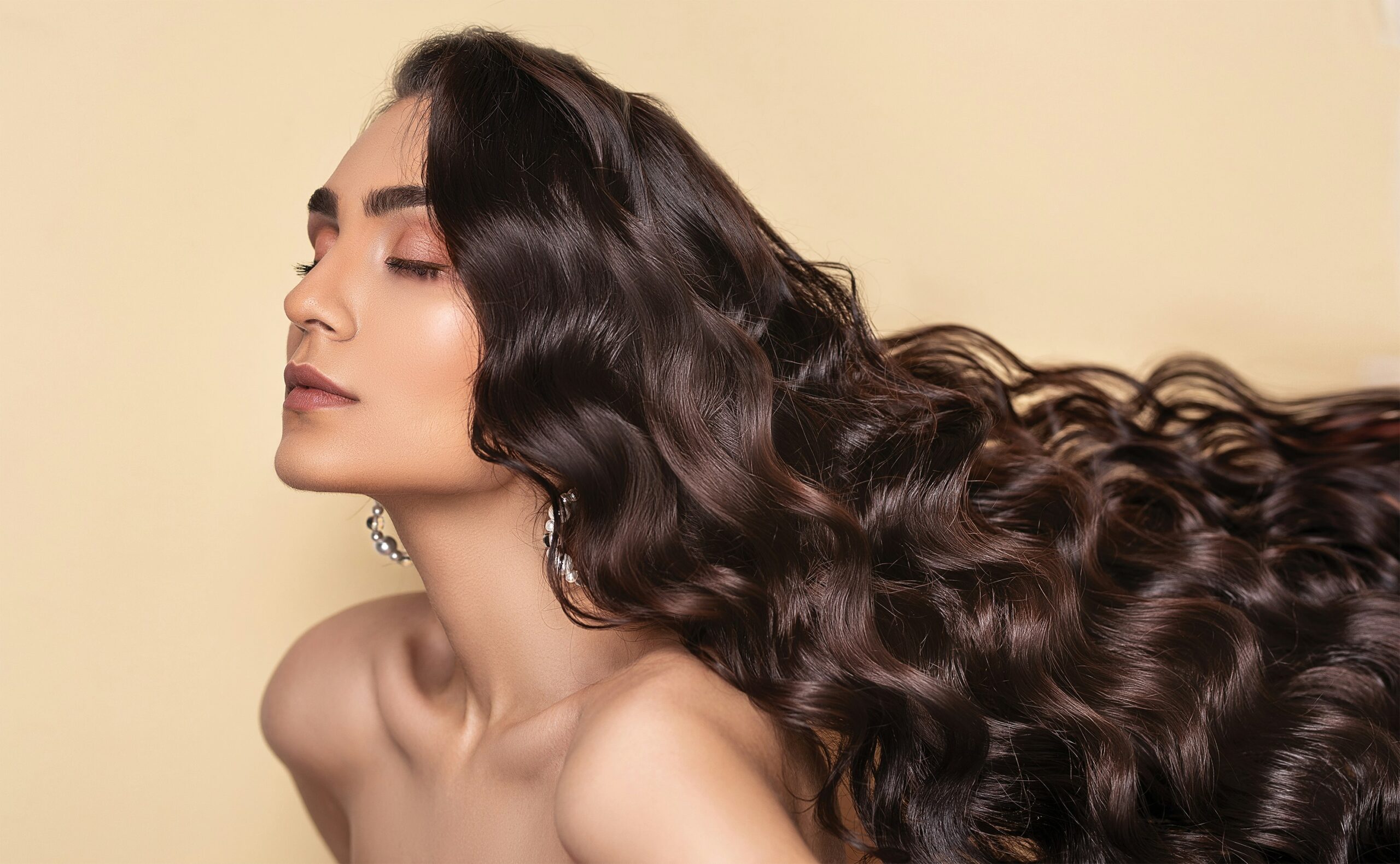The Truth About Aging Hair Changes
Hair undergoes significant transformations as we age, yet most women aren’t prepared for these changes. Hormonal shifts, decreased oil production, and structural alterations create unique challenges that require specialized approaches.
Menopause particularly impacts hair health through reduced estrogen levels. This hormonal change affects hair growth cycles, thickness, and texture in ways that conventional hair care cannot address. Additionally, years of chemical processing, heat styling, and environmental damage compound these natural aging effects.
Understanding these changes empowers you to make informed decisions about your hair care routine. Moreover, recognizing that aging hair has different needs helps you choose products and techniques that work with your hair’s new characteristics rather than against them.
How Hair Changes After 50
Structural Transformations
Hair follicles gradually shrink with age, producing thinner individual strands. This process, called follicular miniaturization, begins in the 30s but accelerates significantly after menopause. Consequently, hair appears less dense and voluminous than in younger years.
The hair shaft itself becomes more porous and fragile. Cuticle layers lift more easily, creating rough texture and increased vulnerability to damage. Furthermore, the medulla (hair’s inner core) may disappear entirely in very fine aging hair.
These structural changes affect how hair responds to styling and products. What worked in your 20s and 30s may now leave your hair flat, dry, or damaged.
Hormonal Impact on Hair Growth
Estrogen decline during menopause dramatically affects hair growth patterns. This hormone supports hair growth phases, so its reduction leads to shorter growth cycles and longer resting phases. As a result, hair grows more slowly and sheds more frequently.
Testosterone levels, while remaining relatively stable, become proportionally higher compared to declining estrogen. This hormonal imbalance can trigger male-pattern hair loss in women, particularly around the crown and temples.
Thyroid function changes also influence hair health after 50. Even subclinical thyroid issues can cause thinning, dryness, and texture changes that require medical attention.
Scalp Environment Changes
Aging hair care must address scalp changes that occur with maturity. Oil production decreases significantly, leading to drier scalp conditions. This reduction affects hair’s natural protective coating and can cause irritation or flaking.
Blood circulation to the scalp also diminishes with age, reducing nutrient delivery to hair follicles. Poor circulation contributes to slower hair growth and compromised hair quality.
Additionally, scalp sensitivity often increases with age. Products that never caused issues may now trigger irritation or allergic reactions.
Essential Mature Hair Products for Women Over 50
Gentle Cleansing Solutions
Mature hair requires gentler cleansing than younger hair. Harsh sulfates that strip natural oils become particularly problematic when oil production is already decreased.
Recommended cleansing approaches:
- Sulfate-free shampoos with moisturizing ingredients
- Co-washing for extremely dry hair
- Clarifying treatments only monthly
- pH-balanced formulas to maintain scalp health
Frequency of washing should decrease with age. Most mature women benefit from washing every 2-3 days rather than daily, allowing natural oils to condition hair and scalp.
Intensive Conditioning Systems
Aging hair care demands more intensive conditioning than ever before. The combination of structural changes and reduced oil production requires rich, nourishing formulas.
Conditioning strategy elements:
- Deep conditioning masks weekly
- Leave-in treatments for daily protection
- Oil-based treatments for intensive repair
- Protein treatments for structural support
Balance moisture and protein based on your hair’s specific needs. Over-conditioning can make hair limp, while under-conditioning leaves it dry and brittle.
Targeted Hair Care Over 50
Specialized products address the unique challenges of mature hair. These formulations contain ingredients specifically chosen for aging hair concerns.
Key beneficial ingredients:
- Ceramides for cuticle repair
- Peptides for follicle stimulation
- Antioxidants for damage protection
- Hyaluronic acid for moisture retention
Look for products labeled for mature, aging, or thinning hair. These formulations typically have higher concentrations of beneficial ingredients.
Aging Hair Routine: Daily and Weekly Care
Morning Routine Adaptations
Mature hair requires modified morning routines that address its unique needs. Gentleness becomes paramount, as aging hair is more fragile and prone to breakage.
Morning routine essentials:
- Gentle detangling with wide-tooth combs
- Leave-in conditioner for protection
- Volumizing products for lift
- Heat protectant for styling
Avoid aggressive brushing or manipulation. Aging hair benefits from minimal handling and gentle treatment throughout the day.
Evening Care Rituals
Evening routines should focus on nourishment and repair. This is when you can apply intensive treatments that work overnight.
Evening care practices:
- Scalp massage to improve circulation
- Overnight hair masks for deep conditioning
- Silk pillowcases to reduce friction
- Protective styling to prevent tangling
These practices help counteract daily damage and support hair’s natural repair processes during sleep.
Weekly Intensive Treatments
Mature hair requires weekly treatments that address deeper structural needs. These sessions provide intensive repair and nourishment.
Weekly treatment options:
- Deep conditioning masks
- Protein treatments for strength
- Scalp treatments for follicle health
- Professional salon services
Rotate treatments based on your hair’s changing needs. What works in winter may need adjustment for summer conditions.
Mature Woman Hair Tips for Styling Success
Heat Styling Considerations
Mature hair is more vulnerable to heat damage due to structural changes. Lower temperatures and reduced frequency become essential for maintaining hair health.
Heat styling guidelines:
- Use lowest effective temperature settings
- Apply heat protectant generously
- Limit heat styling to 2-3 times per week
- Invest in high-quality tools with temperature control
Consider air-drying methods when possible. Natural drying reduces heat damage while creating softer, more natural-looking styles.
Cutting Strategies for Mature Hair
Strategic cutting can dramatically improve the appearance of aging hair. Proper cuts create fullness, movement, and manageability.
Effective cutting techniques:
- Layered cuts for volume and movement
- Blunt cuts for thickness illusion
- Face-framing layers for youthful appearance
- Regular trims to maintain shape
Communicate clearly with your stylist about your hair’s changes. Many stylists need education about mature hair’s unique requirements.
Color Considerations
Hair color can enhance or detract from mature hair’s appearance. Strategic coloring addresses graying while adding dimension and vitality.
Color strategy elements:
- Highlights to blend gray naturally
- Lowlights for depth and dimension
- Semi-permanent colors for gentle coverage
- Professional application for best results
Avoid dramatic color changes that can be harsh on aging hair. Subtle enhancements often produce more flattering results.
Addressing Common Mature Hair Concerns
Combating Thinning and Loss
Hair thinning affects most women over 50 to some degree. Multiple strategies can help address this concern effectively.
Thinning hair solutions:
- Volumizing products for lift
- Thickening treatments for density
- Scalp treatments for follicle health
- Professional medical consultation for significant loss
Early intervention produces better results than waiting until thinning becomes severe. Address concerns promptly for optimal outcomes.
Managing Texture Changes
Aging hair often becomes coarser, frizzier, or more difficult to manage. These texture changes require adjusted care routines.
Texture management techniques:
- Smoothing serums for frizz control
- Moisturizing treatments for dryness
- Texturizing products for manageability
- Professional treatments for severe texture issues
Embrace your hair’s new texture rather than fighting it. Working with natural changes often produces better results than attempting to recreate younger hair characteristics.
Dealing with Increased Sensitivity
Mature women often develop sensitivities to products they’ve used for years. Identifying and avoiding triggers becomes crucial.
Sensitivity management strategies:
- Patch testing new products
- Choosing fragrance-free formulas
- Using gentle, hypoallergenic products
- Consulting dermatologists for persistent issues
Keep a hair care diary to identify patterns and triggers. This information helps you make informed product choices.
Professional Treatments for Mature Hair
Salon Services That Help
Professional treatments can address mature hair concerns more effectively than home care alone. These services provide intensive repair and specialized techniques.
Beneficial salon treatments:
- Keratin treatments for smoothness
- Glossing services for shine
- Scalp treatments for health
- Professional coloring for gray coverage
Schedule regular professional maintenance to keep mature hair looking its best. Monthly or bi-monthly appointments often provide optimal results.
Medical Interventions
Some mature hair concerns require medical attention. Don’t hesitate to consult healthcare providers for significant changes.
Medical treatment options:
- Hormone replacement therapy consultation
- Prescription hair loss treatments
- Nutritional assessment and supplementation
- Dermatological scalp treatments
Early medical intervention can prevent or slow age-related hair changes. Regular health checkups should include hair and scalp assessment.
Advanced Hair Restoration
For significant hair loss, advanced restoration techniques may be appropriate. These treatments can restore confidence and hair density.
Advanced restoration options:
- Hair transplantation procedures
- Platelet-rich plasma therapy
- Low-level laser therapy
- Scalp micropigmentation
Research thoroughly and consult multiple specialists before pursuing advanced treatments. Understanding risks and benefits helps you make informed decisions.
Nutrition and Lifestyle for Healthy Aging Hair
Essential Nutrients
Proper nutrition becomes increasingly important for hair health as we age. Specific nutrients support hair growth and strength.
Key nutrients for mature hair:
- Protein for hair structure
- Iron for oxygen transport
- Omega-3 fatty acids for scalp health
- Biotin for keratin production
Consider supplements if dietary intake is insufficient. However, consult healthcare providers before starting new supplementation regimens.
Lifestyle Factors
Daily habits significantly impact hair health and aging. Positive lifestyle choices support optimal hair condition.
Hair-healthy lifestyle practices:
- Regular exercise for circulation
- Adequate sleep for repair
- Stress management for hormone balance
- Sun protection for damage prevention
These factors work synergistically to support hair health throughout the aging process.
Embracing Your Hair’s Evolution
Mature hair requires a shift in mindset as much as routine. Accepting and working with your hair’s changes leads to better results than fighting natural aging processes.
Quality becomes more important than quantity as hair matures. Focus on maintaining healthy, well-cared-for hair rather than trying to recreate your younger hair’s volume or texture.
Remember that beautiful hair at any age reflects good health and proper care. Consistent attention to your hair’s changing needs will reward you with hair that looks and feels its best.
Your hair care journey continues to evolve with you. Embrace this phase as an opportunity to discover new techniques and products that enhance your natural beauty and confidence.

Hi! I’m Katia Luján, an SEO and Content Marketing expert with over 10 years of experience helping websites grow organically and get approved by Google AdSense.
I’ve worked in Google’s Trust & Safety team for AdSense and have helped more than 100 websites comply with monetization policies. Currently, I’m the strategist behind Buzzlix—creating SEO-optimized, high-quality content on beauty, skincare, and self-care.
I’m passionate about empowering others with actionable, sustainable, and accessible beauty content.


Leave a Reply